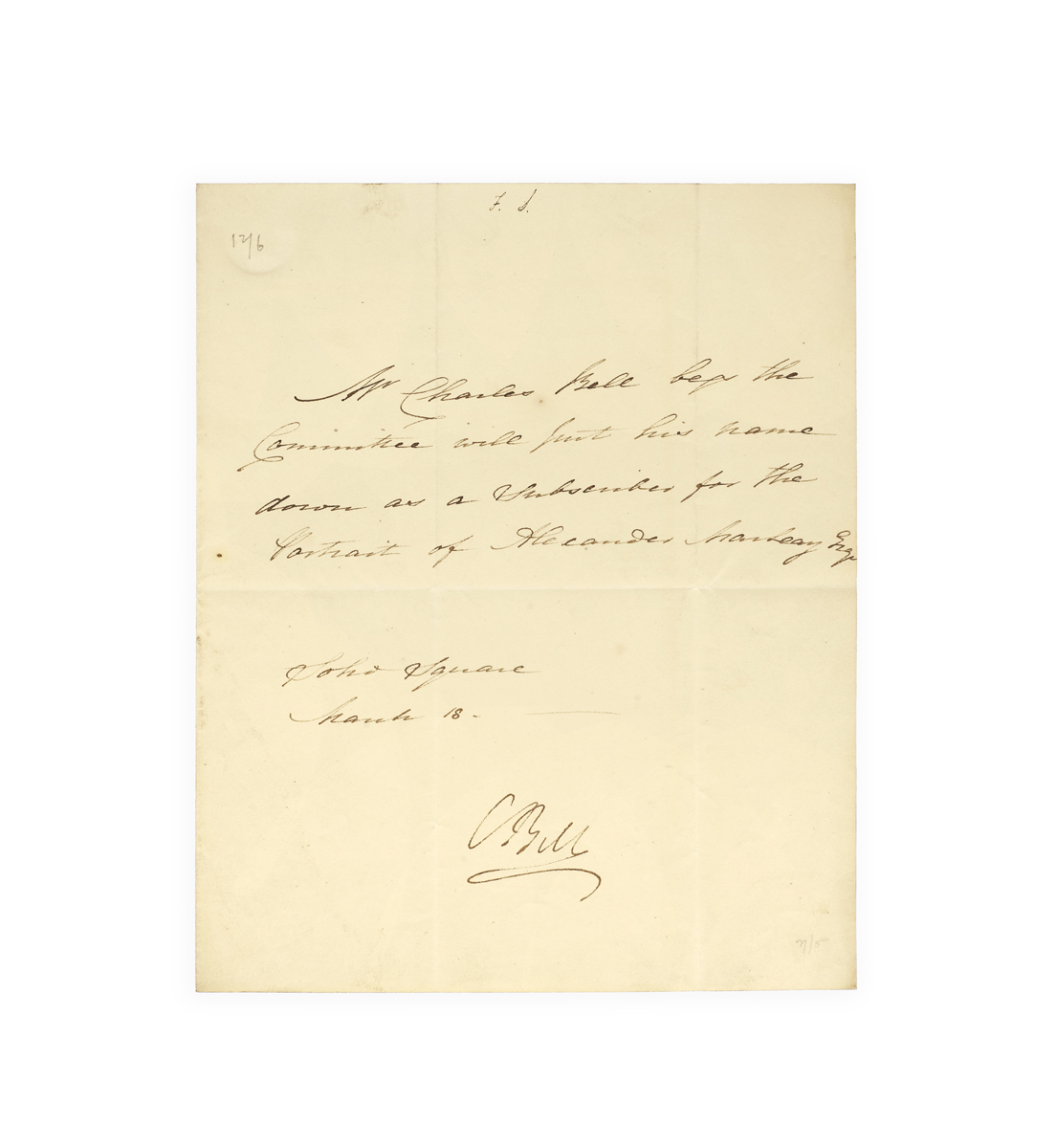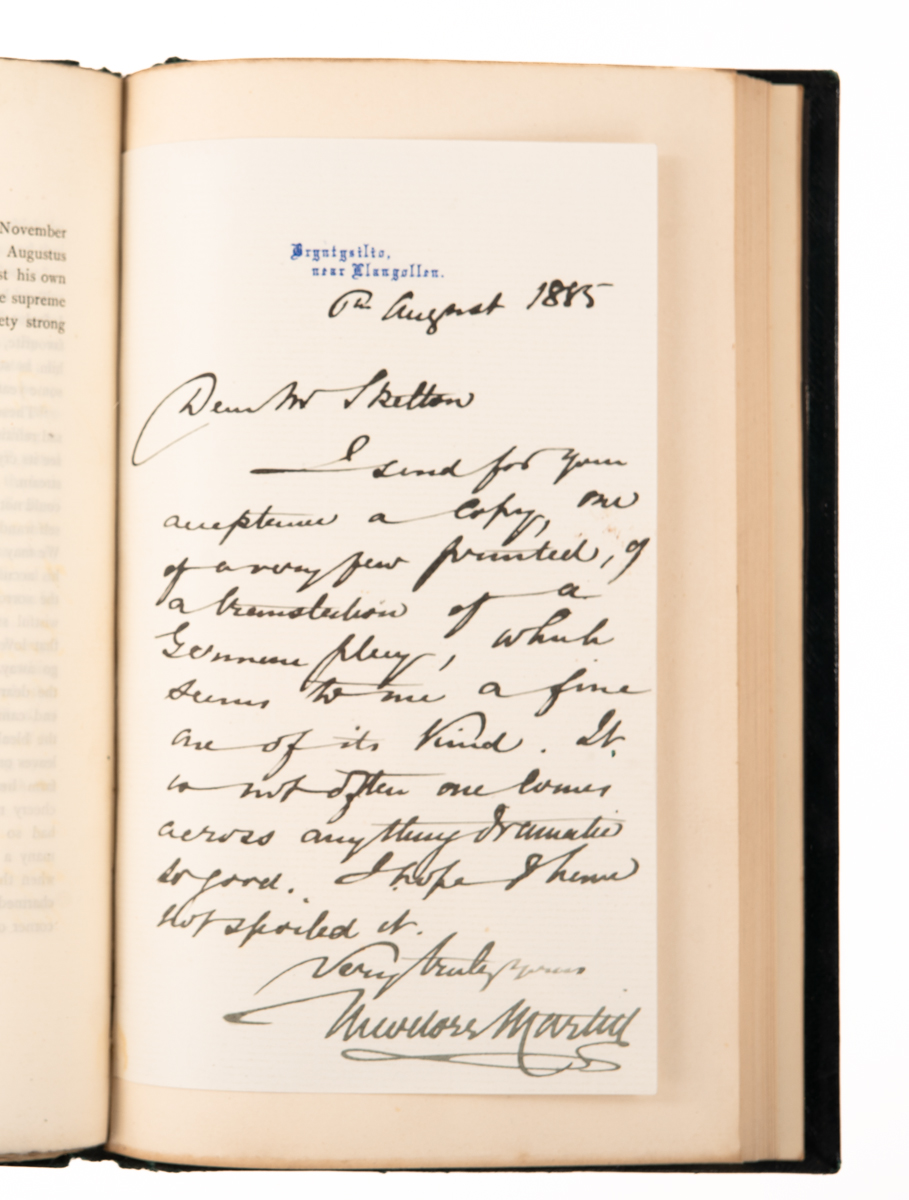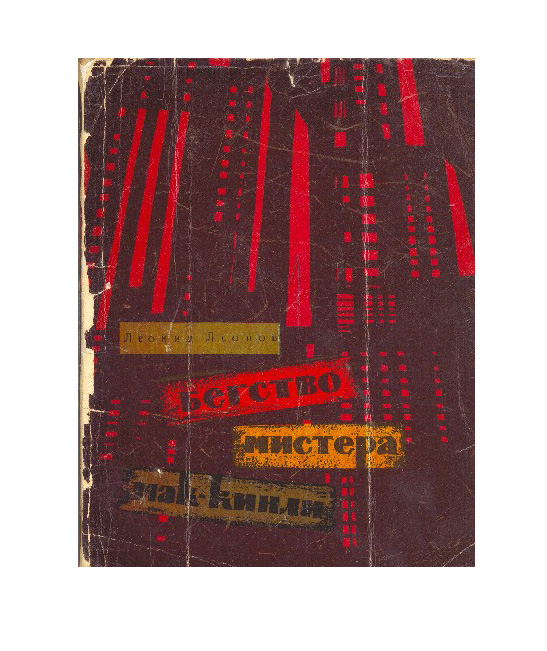
BELL, Charles, Sir.
Letter signed to ‘the Treasurer of the Committee for Mr Macleay’s Portrait’.
Soho Square, London, 18 March [probably 1824 or 1825].
8vo bifolium (226 x 186 mm), pp. [1]; signed ‘C. Bell’, address panel on verso of second leaf; creased where once folded, lightly dust-soiled, but in very good condition.

Added to your basket:
Letter signed to ‘the Treasurer of the Committee for Mr Macleay’s Portrait’.
The neurophysiologist Sir Charles Bell (1774–1842) ‘begs the Committee will put his name down as a subscriber for the Portrait of Alexander Macleay Esq.’. The portrait in question is doubtless the one painted by Sir Thomas Lawrence in 1825 and now in the Linnean Society.
Alexander Macleay (1767–1848), entomologist and civil servant in Australia, was ‘elected fellow of the Linnean Society in 1794, [and] served as secretary between 1798 and 1825. In 1808 he was elected fellow of the Royal Society and in 1824 joined its council. He was a corresponding member of several European learned societies and published several monographs; in 1814 he was presented with a diploma by the Royal Academy of Science in Stockholm. He won particular renown for his collection, principally of insects, which was considered one of the finest in Europe. In March 1817 Macleay was retired on pension following the abolition of the transport board. He possessed other assets, including those in a family bank in Wick, which he had to sell in mid-1825 after the bank experienced difficulties. His income, however, proved insufficient for the needs of himself and his growing family, and in 1825 he accepted an offer from Earl Bathurst to become colonial secretary in New South Wales’ (ODNB).
‘Early in life [Bell] gave evidence of ability as a practical dissector, anatomist, and surgeon, making his own beautiful drawings in his own inimitable way. His various essays on the nerves of the face, and his illustrations of these nerves under disease, are of the highest importance and deepest interest, and the greatness of the work can only be realized when compared with what was known, or rather not known, in his day of the physiology of the nervous system. His various systems of anatomy, dissections, and surgery, still stand unrivalled for facility of expression, elegance of style, and accuracy of description’ (Choulant, History and bibliography of anatomic illustration p. 343). Later in his career Bell demonstrated the sensory and motor functions of the fifth cranial nerve, discovered the long thoracic nerve that bears his name and described the facial paralysis, known as Bell’s palsy, which results from facial-nerve neuropathy.

